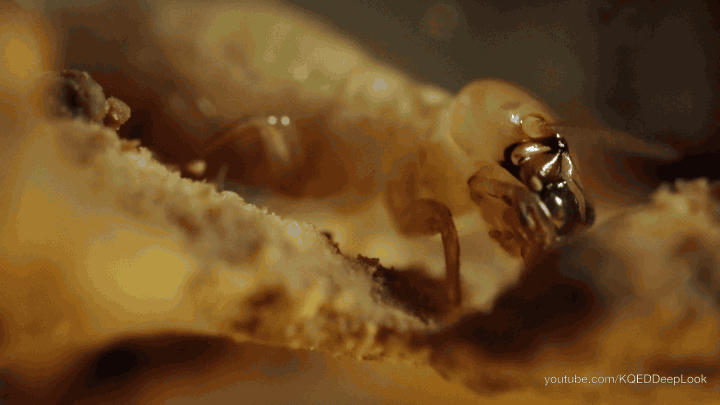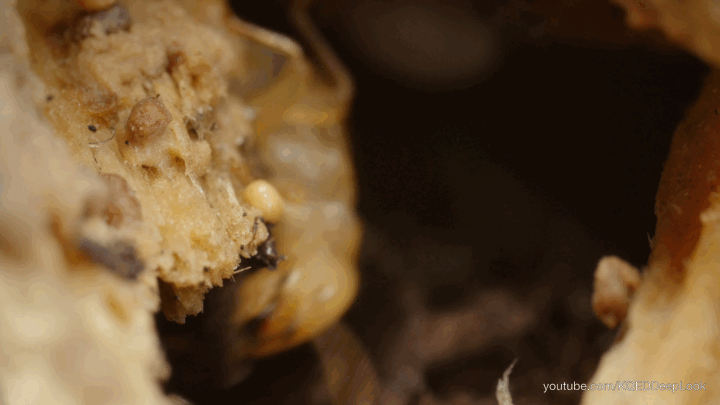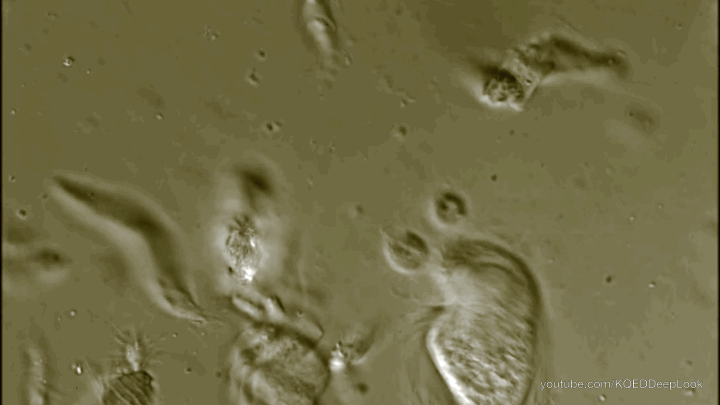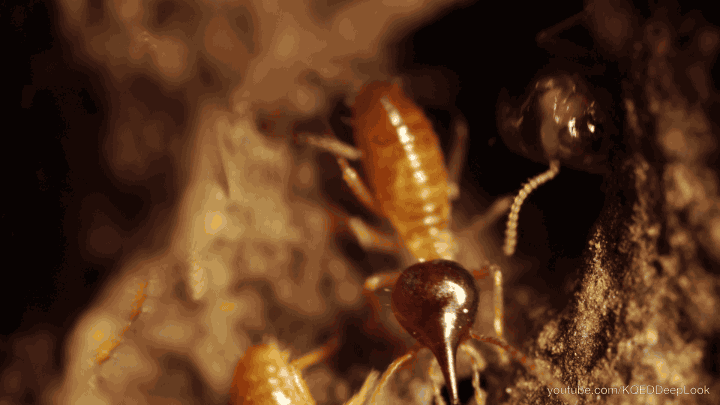These Termites Turn Your House Into a Palace of Poop
Termites cause billions of dollars in damage in the United States every year. Most pest-control companies douse infested houses and surrounding soil with chemical insecticides. But researchers are now trying to take advantage of termites’ peculiar habits to control them with biological strategies instead, by disrupting their amazing digestive systems.
Termites can crawl up into a house from the soil through tubes they make out of dirt and saliva, or winged adults can fly in, or both, depending on the species and type of termite involved. Once they’re established inside a house, they crawl through tight spaces — like the cockroaches they’re closely related to — gnawing and scraping the wood, causing damage to anything from structural wood and paneling to furniture.

Some types, such as dampwood termites that are attracted by water-damaged wood, use their cardboard-like poop pellets to build up their nests, turning a human house into a termite toilet.
“They build their own houses out of their own feces,” said entomologist Michael Scharf, of Purdue University, in Indiana.
Termite poop isn’t smelly, like a carnivore’s fecal matter.
“It smells smoky,” he said.

And while they’re using their poop as a building material, termites are also feeding on the wood. They’re one of the few animals that can digest wood and extract nutrients from it, a feat humans are incapable of.
“We can degrade proteins and fats and sugars and starches,” said microbiologist Jared Leadbetter, of the California Institute of Technology, in Pasadena. “But we don’t have enzymes in our saliva that break down cellulose.”
It turns out that even termites need help breaking down the cellulose in wood. Hundreds, and sometimes thousands, of species of microbes that live packed inside their guts help them do this.
Most of these microbes are bacteria. Leadbetter and his colleagues have found that one of these bacteria, called Treponema azotonutricium, combines nitrogen from the air and calories from the wood to make protein for the termites. This almost-magical ability would be akin to a human turning a calorie-rich food like a potato into a protein-rich food like a steak.
Besides the hundreds of bacteria, a termite’s gut is also host to a couple dozen species of protists, organisms that are neither animals, nor plants, nor fungi. Some of these protists swim around with the help of tail-like appendages called flagella. And scientists have found that several of them help termites break down wood by fermenting it, much the same way a brewer turns grain into beer.

“The termites need the protists,” said Scharf. “The termite secretes its own enzymes at the front of the gut, near their mouth, and starts to break down the wood.”
But this isn’t enough to derive calories from the wood. The partially digested wood first has to travel to the back of the termite’s gut — the hindgut — which serves as a fermentation chamber where protists and bacteria turn the wood into a substance called acetate, which gives the termite energy.
Researchers have found that certain types of protists are essential for termites’ survival. When these protists are eliminated from the termite’s gut, the insect can’t get any nutrition out of the wood. This is a weakness that biologists hope to exploit as a way to get rid of termites using biology rather than chemicals.
Louisiana State University entomologist Chinmay Tikhe is working to genetically engineer a bacterium found in the Formosan subterranean termite’s gut so that the bacterium will destroy the gut protists. The idea would be to sneak these killer bacteria into the termite colony on some sort of bait the termites would eat and carry back with them.
“It’s like a Trojan Horse,” said Tikhe, referring to the strategy used by the Greeks to sneak their troops into the city of Troy using a wooden horse that was the city’s emblem. “The bacterium is from the gut, so the termite doesn’t realize that it’s a pathogen.”
The bacteria would then kill the protists that help the termite derive nutrition from wood. The termites would eventually starve.
The engineered bacterium would be specific enough to the Formosan termite that it wouldn’t spread to other species of termites that are beneficial to the environment, said Tikhe. Termites in the rainforest, for example, break down wood into things that other creatures can eat and they improve the soil by crawling through it, just like worms do.

Researchers have tested biological controls such as fungi as treatments against termites. But termites’ immune systems fight them back, and termites usually protect their colony by leaving it when they’re sick, said Tikhe.
By tricking the termite into believing it’s eating a friendly microbe, researchers hope to turn its friends against their host.